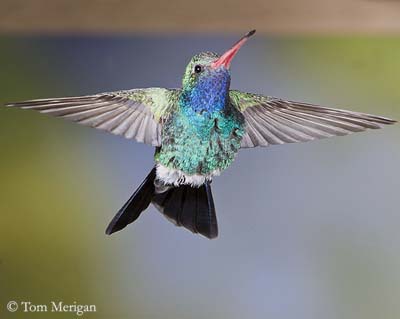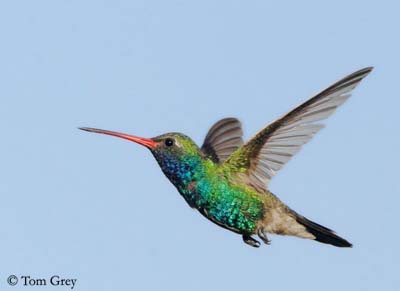
Broad-billed Hummingbird
Cinanthus latirostris
Apodiforme Order – Trochilidae Family
BIOMETRICS:
Length: 10 cm
Wingspan: 12 cm
Weight: 3 à 4 g
DESCRIPTION:
Broad-billed Hummingbird adult male is dark green above and below. It has white undertail coverts, and black forked tail. Throat is blue.
Bill is mostly red with black tip. Legs and feet ate blackish. Eyes are black. Its tongue is adapted to lap nectar or to catch an insect from the heart of a flower.

Adult female is duller above and grey below. She may have a narrow white eye stripe, starting above the eyes and extending behind, towards the neck. Tail has pale outer tips.
PROTECTION / THREATS / STATUS:
Broad-billed Hummingbirds were killed in South America in the 19th century, and sent to England as decorations, in homes and in women’s hats.
Now, their habitat is maintained and protected, and Hummingbirds, which pollinate many flowers, are recognized as helpers to support growth of ornamental horticulture industry.
Fr: Colibri Circé
All : Breitschnabelkolibri
Esp : Colibrí de Pico Ancho
Ital : Colibri beccolargo
Sd : Brednäbbad Kolibri
Photographs by Tom Merigan
His website: Tom Merigan’s Photo Galleries
Photographs by Tom Grey
His website: Tom Grey's Bird Pictures
Text by Nicole Bouglouan
Sources:
HANDBOOK OF THE BIRDS OF THE WORLD Vol 5 by Josep del Hoyo-Andrew Elliott-Jordi Sargatal - Lynx Edicions - ISBN: 8487334253
A GUIDE TO THE BIRDS OF MEXICO AND NORTHERN CENTRAL AMERICA by Steve N. G. Howell, Sophie Webb - Oxford University Press - ISBN: 0198540124
All About Birds (Cornell Lab of Ornithology)
Wikipedia (Wikipedia, The Free Encyclopedia)
What Bird-The ultimate Bird Guide (Mitchell Waite)
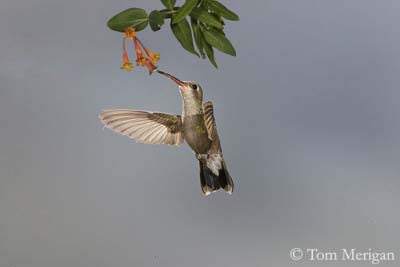
Juveniles resemble female, with buffy fringes on upperpart feathers.
VOICE: SOUNDS BY XENO-CANTO
Broad-billed Hummingbird’s is a short chattering “je-dit”.
When it displays, male’s song is a whining “zing”. At other times, male’s song is a series of high notes, starting with “chip”.
HABITAT:
Broad-billed Hummingbird is common in desert canyons and low mountain woodlands, depending of food resources and appropriate plants.
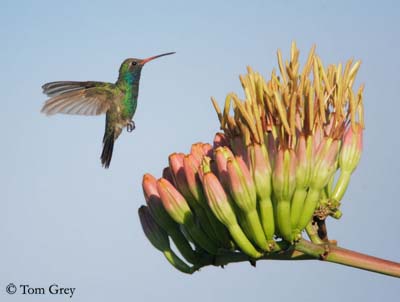
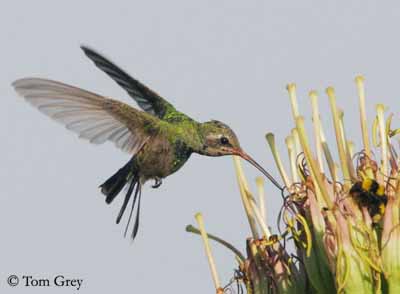
RANGE:
Broad-billed Hummingbird breeds from SE Arizona and extreme SW of New Mexico, and southwards, into Central Mexico.
It winters in its breeding range, except United States and Northern Mexico.
BEHAVIOUR:
To feed, Broad-billed Hummingbird uses its forked tongue to lap flower nectar. It may eat 5 to 10 times per hour. To save its energy, it has to consume 1, 5 to 3 times its body mass each day. It also catches insects presents in the flowers. However, it consumes more water than food in a day.
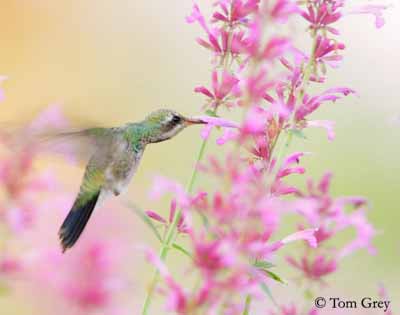
Broad-billed Hummingbird is territorial and aggressive, chasing intruders, uttering vocalizations and diving. Male defends feeding and breeding territories, ands female defends nesting site. Male starts its defence in the air, with clawing, pushing or using its bill as a weapon.
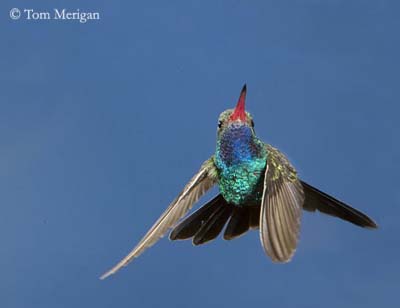
As other Hummingbirds, Broad-billed Hummingbirds enter in hypothermic torpor if nights are cold, to conserve their energy. In this state, birds can appear dead.
Broad-billed Hummingbird is polygamous. Males have several mates at the same time, and a male which defends a territory is more successful than others.
Males attract females by singing very simple songs. When female responds, copulation may follow. The male also performs courtship displays. It starts, hovering on one foot in front of the female, and then, it flies, forming arcs, as a pendulum.
FLIGHT:
Broad-billed Hummingbird flies as a helicopter: it is able to hover, to fly backwards and side to side.
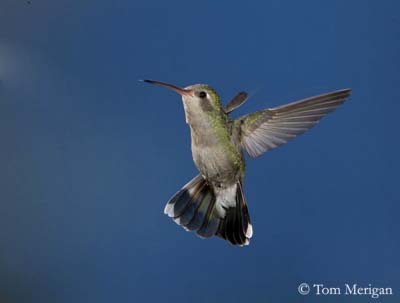

REPRODUCTION:
Broad-billed Hummingbird’s nest is usually built by female, in trees or large scrubs, at about 4 to 7 feet above the ground. Nest is made with grasses, leaves, bark, generally plant materials.
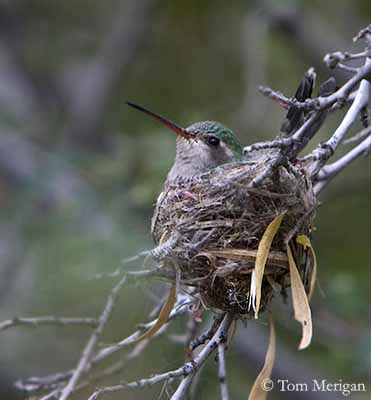
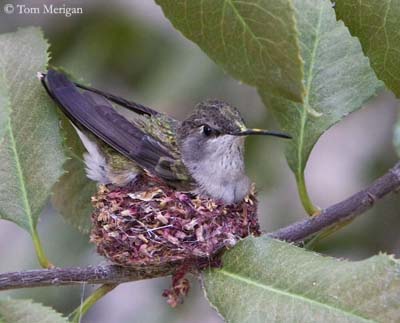
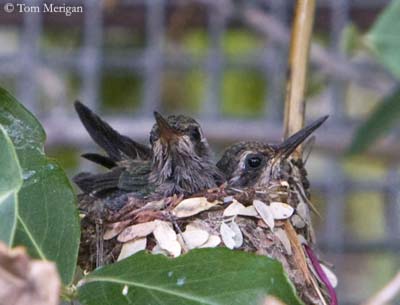
Female lays 1 or 2 white eggs. Incubation lasts about 14 to 23 days, by female. Chicks hatch altricial, and female alone cares them.
DIET:
Broad-billed Hummingbird feeds mainly on nectar flower. Then, it may eat sugar-water from feeders. But they need protein, and they also eat many small insects. They drink more water than they eat food.
